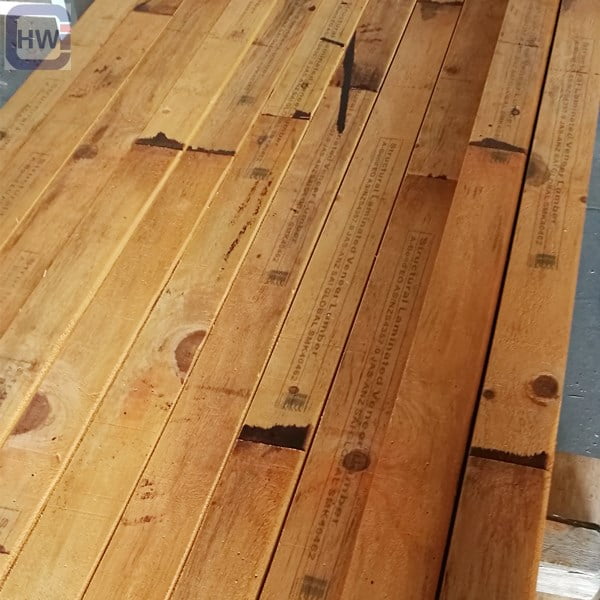
As a dedicated DIY enthusiast with a penchant for woodworking and construction, I’ve had my fair share of experiences with various building materials. Among these, CD non-structural plywood has consistently stood out as an excellent choice for a wide range of projects. In this article, I’m excited to share my knowledge and insights about this remarkable plywood, its uses, advantages, and how to work with it.
Unraveling the Mystery of CD Non-Structural Plywood
CD non-structural plywood, often referred to as “CD grade plywood,” is a versatile type of plywood that is not primarily designed for load-bearing or structural applications. It’s named after the two grades it possesses: the “C” grade for the face and the “D” grade for the back. This plywood is commonly used for projects that don’t require the same level of structural strength found in other types of plywood.
Key Features of CD Non-Structural Plywood
- Two Grades: The “C” grade denotes the appearance of the face veneer, which is relatively smooth, while the “D” grade signifies the quality of the back veneer, which may have minor defects.
- Versatility: CD non-structural plywood is incredibly versatile and suitable for a wide range of projects, including furniture, cabinets, wall paneling, and DIY crafts.
- Affordability: It’s often more budget-friendly compared to structural plywood, making it an economical choice for DIY enthusiasts.
- Ease of Handling: The manageable thickness and weight of CD plywood make it easy to work with, especially for smaller projects.
Why I Choose CD Non-Structural Plywood
1. Versatility
The primary reason I opt for CD non-structural plywood is its incredible versatility. Whether I’m crafting custom furniture, designing cabinets, or embarking on a DIY project, this plywood can handle a wide variety of applications.
2. Budget-Friendly
As someone who appreciates the value of a dollar, I find CD plywood to be a cost-effective option. It allows me to explore my creative ideas without emptying my wallet, making it an ideal choice for budget-conscious DIY projects.
3. Ease of Handling
The manageable thickness and weight of CD non-structural plywood make it user-friendly, even for those without access to heavy equipment. Cutting, shaping, and assembling are all made more accessible.
4. Quality Finish
While it’s not designed for load-bearing purposes, CD plywood offers a quality finish on the face, making it suitable for projects where appearance matters. Its “C” grade face veneer is relatively smooth, creating a visually appealing surface.
How to Work with CD Non-Structural Plywood
Working with CD non-structurals plywood is a straightforward process. Here’s a step-by-step guide to help you make the most of this versatile material:
1. Gather Your Materials
Before starting your project, ensure you have all the necessary tools and materials on hand. You’ll need CD non-structurals plywood sheets, a circular saw or jigsaw, measuring tape, screws or nails, wood glue, sandpaper, and safety gear, including goggles and gloves.
2. Measure and Cut
Measure and mark the plywood sheets according to your project’s design. Use a circular saw or jigsaw to cut along the marked lines. Ensure precise and straight cuts for a professional look.
3. Assemble and Secure
Assemble the cut pieces according to your project design. Use wood glue to bond the pieces together, and then secure them in place with screws or nails. Pay attention to the structural requirements of your project to ensure a sturdy build.
4. Finish and Sand
After assembly, sand the edges and surfaces to achieve a smooth finish. This step is particularly important for projects where appearance matters, such as furniture and decorative elements.
5. Paint or Finish
Depending on your project’s requirements, you can paint, stain, or apply a finish to the CD plywood to achieve the desired look. Follow proper drying and curing times for the best results.
FAQs About CD Non-Structural Plywood
1. Can CD non-structural plywood be used for outdoor projects?
No, CD non-structurals plywood is not suitable for outdoor use, as it is not designed to withstand exposure to the elements. It is best reserved for indoor applications.
2. Is CD plywood strong enough for furniture and cabinets?
Yes, CD non-structurals plywood is strong enough for furniture and cabinet construction. While it may not have the same load-bearing capacity as structural plywood, it is more than adequate for these types of projects.
3. How does the cost of CD plywood compare to other plywood types?
CD non-structurals plywood is generally more budget-friendly than thicker structural options. It’s a cost-effective choice for various DIY and woodworking projects.
4. Can CD non-structural plywoods be used for wall paneling?
Yes, CD plywood is a suitable choice for wall paneling, as it offers a smooth and attractive face veneer. Its versatility makes it a great option for enhancing interior spaces.
5. What’s the difference between CD plywood and structural plywood?
The primary difference lies in their intended use and strength. CD plywood is designed for non-structural applications, while structural plywood is engineered for load-bearing purposes.
Conclusion
In my journey as a DIY enthusiast, CD non-structural plywoods has proven to be a versatile and budget-friendly building material that consistently delivers excellent results. Its ability to handle a wide range of projects, combined with its affordability and ease of handling, has made it a trusted companion in my creative endeavors.
The next time you embark on a DIY project, consider CD non-structural plywoods as your go-to material. It’s a reliable choice that will help you bring your creative ideas to life without breaking the bank.
For additional plywood options, including thicker structural varieties and specialty plywood like HPL Birch Plywood and Caravan Thin Plywood, be sure to explore CN-Plywood’s offerings. Happy crafting!
Post time: 14 10 月, 2023
